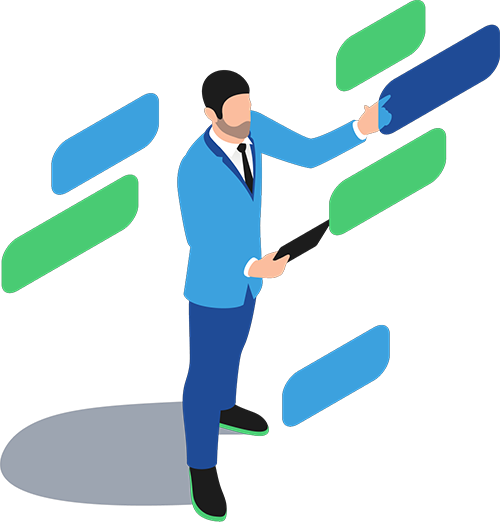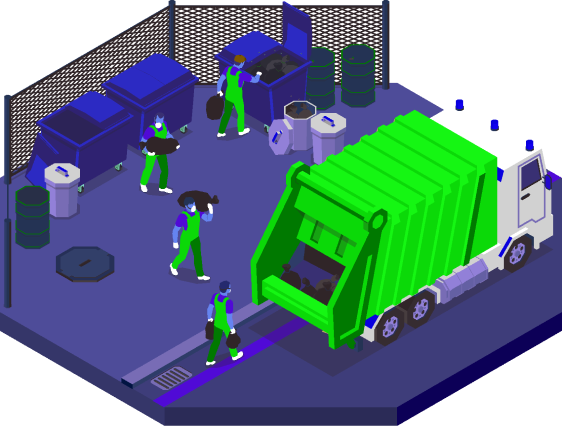Transforming Urban Landscapes
How IoT Solutions are Revolutionising Smart Cities
From healthcare to entertainment, smart devices have increasingly become part of our daily lives. Now, even cities can become smart, and just in time with over 70% of the world’s population expected to live in urban areas by 2050. Information and technology work hand-in-hand in smart cities to achieve all manner of amazing effects, from lighting to traffic to parking and more. It’s all achieved by cleverly integrating informational technology with operational tech, also known as IoT convergence. But how exactly do IoT solutions work and why are they useful?


The Building Blocks of Smart Cities Enabled by IoT
IoT devices form three main blocks which all click to make a city smart: infrastructure, data, and secure connectivity.
City infrastructure is nothing new, but what exists can be enhanced further when integrated with IoT devices. Traffic, parking, and even pedestrian foot traffic can be enhanced with the addition of sensors to cameras or other existing devices, for example. These sensors and devices can track an array of issues – it’s not just about automatic parking or transportation – like detecting radiation or toxic chemicals in the air or water. Integrating IoT can also make managing utilities easier, with benefits for consumer and company alike. While global IoT in smart cities is a fledgling share of the market, it was already valued at $148.6B in 2022.
These devices and sensors in smart cities pass on secondary benefits too: data analytics. Cities are complex organisms with a myriad of decisions that need to be made every day. Vast quantities of data can be used to enhance these decisions, but might not be used efficiently without IoT devices. The data from IoT devices can be parsed and processed effectively, leading to more informed decisions.
Connectivity is the true soul of IoT and what makes smart cities work together a cohesive whole. Therefore IoT devices are encrypted and highly secure to ensure unauthorised persons can’t access the network and its data.
Key Areas of Impact
Smart cities sound clever, but how exactly do the IoT integrations change and affect a city and its inhabitants? The answer is that smart cities and IoT solutions have a nearly limitless number of applications and effects, from smartly managing stormwater in cities where water infrastructure only lasts 75 years, to gamifying parking and cracking down on illegal driving.

Traffic Management and Transportation
IoT devices and sensors collect a feast of traffic data and analyse these in real-time. That includes the number of vehicles, their speed, proximity, and even which lanes they occupy. That means IoT-based smart traffic systems can react accordingly, triggering traffic lights and signs at the very right moment you need it. This optimises traffic flow through crowded cities, making it easier for people to get around but also reducing fuel consumption and emissions. Reduced insurance premiums and safer roads naturally follow too. It not only benefits drivers, but buses, trams, and cyclists too. Smart transportation is big business too, worth $122B in 2023 and expected to grow to $248B in 2028.
Parking is also enhanced with IoT integrated cities. Fnding a space is easier because the IoT integrated devices can sense or monitor the nearest available parking spaces. This allows people to drive accurately, as we know exactly where we need to go. This is especially helpful in narrow cobblestone city centres. Additionally, apps connected to smart cities can turn parking into a game, rewarding users for parking well and reporting illegal parking.

Energy Management
Smart cities’ connectivity is extended further into the energy system, forming smart grids. Smart cities can control street lamps and other public lighting to save energy, reducing carbon footprints and operational costs. The fact is that 70% of global CO2 emissions, and over two-thirds of total energy use, are attributed to metropolitan areas. By integrating IoT, smart cities are making great strides towards turning our cities green, which only further increases quality of life for everyone.

Public Safety and Health
Applying IoT solutions to cities has a marked impact on the health and happiness of its residents. Smart surveillance systems assist police in solving crimes, allowing them to identify suspects and criminals with ease, giving them eyes in places they wouldn’t usually have. Furthermore, IoT can be applied to monitor hazards like emissions pollution that affect our health, allowing authorities to understand where to focus public safety initiatives. User data can be analysed too so that health authorities can identify underserved areas and respond flexibly to the health requirements of a city’s population. Informed decisions lead to more responsive and effective healthcare provision – a market that is valued at $63B in 2023.

Waste Management
Not the most glamorous use of IoT innovation, but one that is essential for its impact on our health and the environment. IoT devices in smart cities can enhance waste collection efficiency by using sensors to detect when and where collections are needed and thereby reduce the carbon footprint of bin collectors by up to 50%.

Smart Environments
IoT plays a crucial role in promoting sustainability and a greener future.In urban areas, sensors can also identify air and water pollution levels, as well as potential health risks in local parks. This information is invaluable because it allows the authorities to pinpoint key initiatives to improve the environment and helps us make informed decisions when spending time outdoors. As the climate changes and we face climate emergencies, smart cities can also help us manage and counteract this, such as through managing stormwater.
A clear example of this is the collaboration in Berlin between melita.io and m2m Germany, specialists in smart radio communication. Both parties are working in sync to set new standards for digital innovation and urban development through the implementation of a system that can detect potential flooding. Further details and information can be read in this case study.
The Future of Smart
Cities with IoT
The impacts and benefits of IoT integrated cities are numerous and well documented, but we need to act to make the most of it. We need to build off the benefits of emerging technologies like AI and 5G, and not rest on our laurels, so that we progressively build towards a better future.
Public policy needs to shape this process too so that IoT is integrated democratically and with the consent of local people. Education about IoT solutions is imperative so that everyone understands its benefits, uses, as well as its limitations with privacy. Ultimately, smart cities with IoT exist – and should exist – to improve the lives of the people in them, so we must engage with those people to develop and implement smart city initiatives to benefit everybody’s health and wellbeing.
